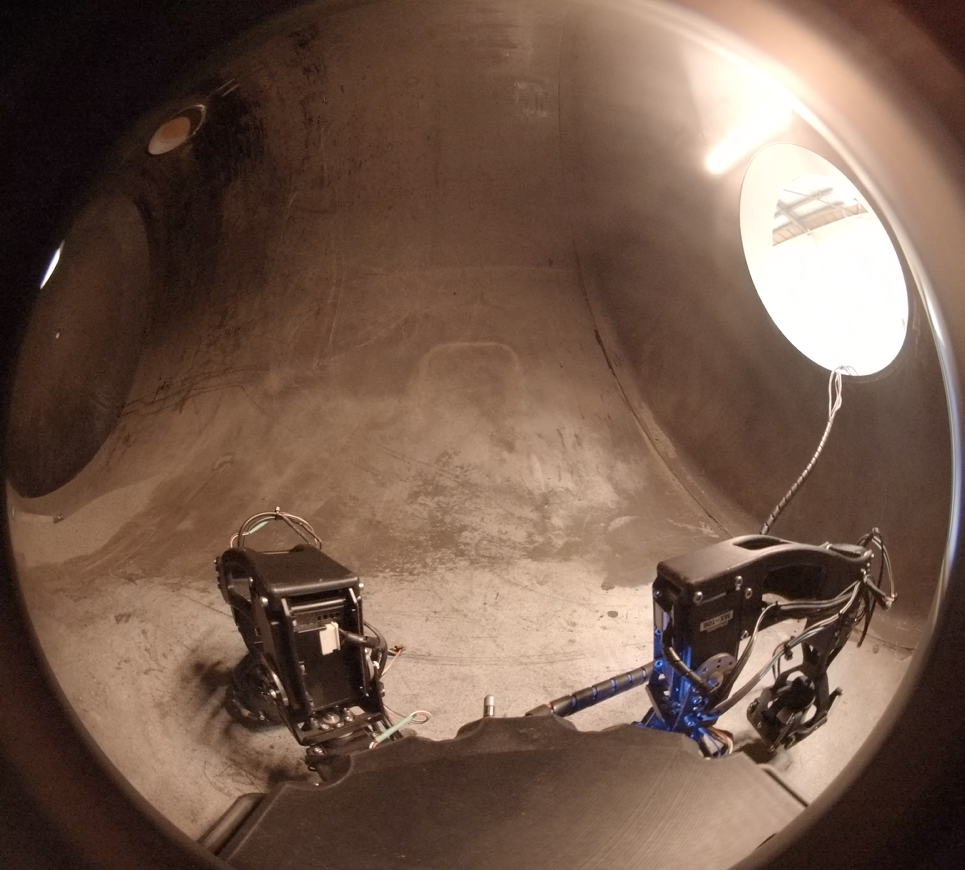Robotic Inspection Inside Confined Spaces

The inspection of confined spaces has historically been one of contention within the industry. Dangerous for those who carry it out, expensive and necessitating long periods of downtime, moving from a human model to a robotic solution is seen as a welcome transition for asset owners, inspection service provider and insurance companies alike.
Advantages of Robotic Inspection
The most obvious advantage is that of human safety. The act of entering a confined space is a high-risk action. Assets that contain or have contained hazardous substances present further challenges, and the nature of confined spaces makes effective inspection complex and challenging.
Removing human entry to such spaces brings about the following benefits:
- Lowered risk of injury and fatality.
- Related lowering of insurance costs, typically by up to 50%.
- Dramatically reduced downtime.
- Robots can enter non-oxygen atmospheres and the need for erecting safety devices for human entry is removed.
- Increased productivity.
- Highly repeatable and constant data leading to more reliable inspection results.
As robotics have advanced so has their use for inspection, with many major companies introducing strategies to reduce or remove the need for humans to enter confined spaces.
These include:
- DOW Chemical are driving for a 2025 target of no human entry to confined spaces.
- Chevron’s strategy aims to achieve this by the end of this year (2020).
- Statoil, Shell, BASF and BP also have similar targets.
What Does This Mean For Service Providers?
In virtually all cases, asset inspection and Non-Destructive Testing (NDT) is carried out by 3rd party external providers. These highly skilled tasks are carried out by trained, certified personnel and the act of robotic inspection requires a very different approach to that of the traditional hand-on methods.
Specific training is necessary, as carrying out a maintenance and inspection via a robot has very distinct differences.
- Robots don’t have human intuition: At present robots don’t have the autonomous ability to make decisions based on experience or the ability to determine danger.
- Robots can’t plan their own inspection path: This needs to be mapped and determined by the human operator.
- Control is either manually or via a predefined automated program: Both options require the inspection plan to be mapped out in intricate detail and programmed into the robotic unit.
Trained operators undertake mandatory training that includes inspection planning, path finding, remote navigation, deployment and retrieval of the unit.
Inspection Planning Software
The aim of robotic inspection is to be as close as possible to having a human in-situ within the confined space. The use of state-of-the-art software allows operators to carry out fast, in-depth inspections of high quality that are highly repeatable.
In addition, such software also provides a safe and educational learning curve. Operators are able to master multiple training scenarios through simulated inspection experiences, working on authentic predefined modules created from accurate 3D mapping. The ability to carry out real-life virtual scenarios ensures high-level learning and a smooth transition into real-world locations.
Equipment Provider Nexxis Lead the Way in Robotic Inspection Solutions
Leading equipment provider, Nexxis, are committed to empowering their clients with the preeminent equipment necessary to carry out the ultimate in inspection tasks and to meet current and future targets. This includes both the provision of physical supplies and the expertise to use them. With an in-house training division providing registered, industry-specific training courses, service providers can ensure their staff have the latest technological learnings and skills to service a changing environment.
Discover more about our full range of robotic inspection equipment or contact us today for a no-obligation chat.
